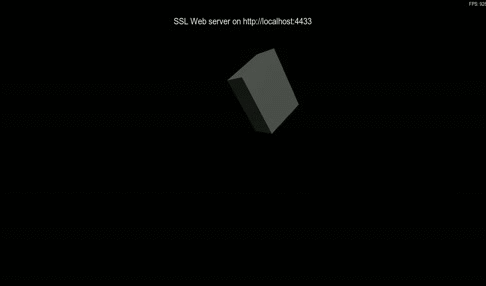ssl_socket_01
Warning
The scope of applications for UnigineScript is limited to implementing materials-related logic (material expressions, scriptable materials, brush materials). Do not use UnigineScript as a language for application logic, please consider C#/C++ instead, as these APIs are the preferred ones. Availability of new Engine features in UnigineScipt (beyond its scope of applications) is not guaranteed, as the current level of support assumes only fixing critical issues.
This article describes the <UnigineSDK>/data/samples/plugins/ssl_socket_01.cpp sample.
The ssl_socket_01 sample demonstrates how to create a secure network communication server.
Notice
It is required to launch the SSLSocket plugin before running the sample.
In this sample, the server creates a socket that listens on port 4433 and accepts a connection from any client. If the client connects, the server sends the encrypted web page to it.

After you run this sample, you can open the web page, which is sent to the client. It is located on the https://localhost:4433. To see the encrypted web page, run also the ssl_socket_00 sample.
See Also
- Article on the SSLSocket plugin
Last update:
31.07.2020
Помогите сделать статью лучше
Была ли эта статья полезной?
(или выберите слово/фразу и нажмите Ctrl+Enter